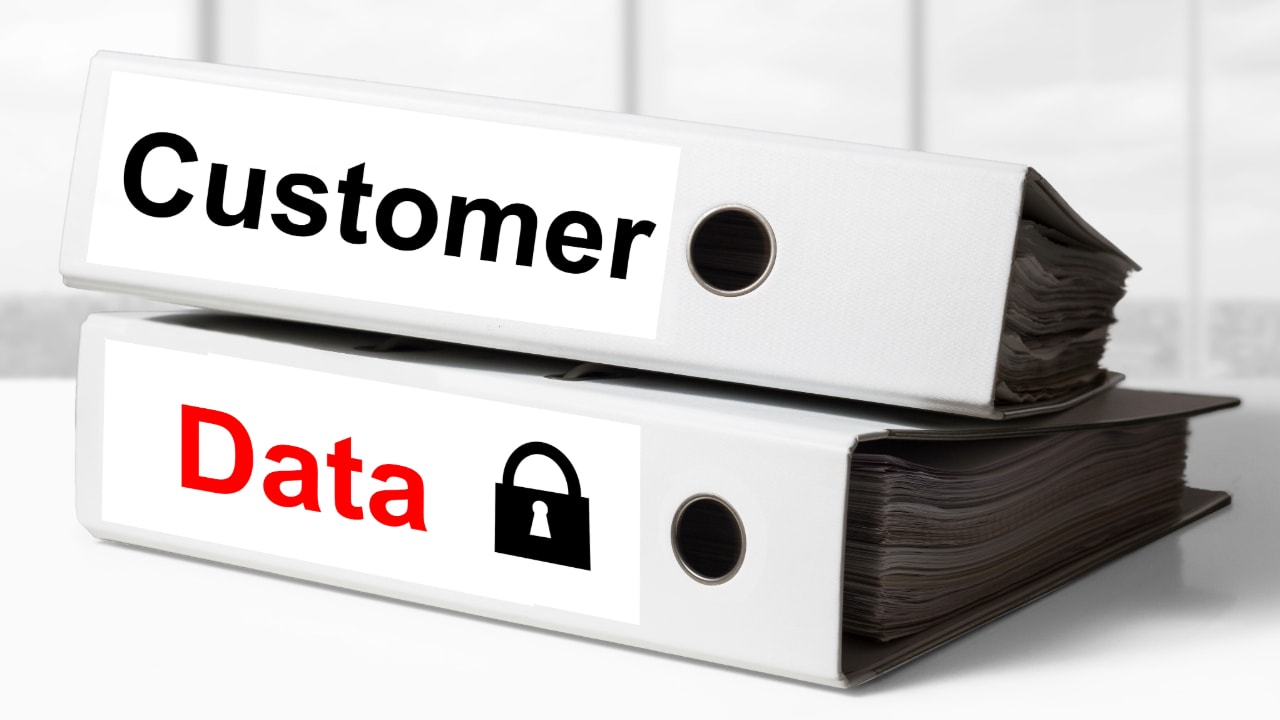What Is a Data Classification Policy?
Jun 05, 2025
Here’s the reality: not all data is created equal. Some details are meant for press releases and blog posts, while others should be locked down tighter than the group chat after a wild weekend in Vegas—strictly need-to-know. A data classification policy helps you tell the difference.
A data classification policy is a formalized approach to categorizing your organization’s information assets, including both digital and physical data, based on sensitivity, criticality, and regulatory requirements. It guides how data should be labeled, accessed, stored, shared, and ultimately destroyed.
In simpler terms? It tells people what they can do with data—and what will happen if they do it wrong.
But it’s more than just assigning labels. As technology systems evolve, the policy must adapt to ensure ongoing protection and compliance. A data classification policy provides the operational backbone for your security, compliance, and risk management programs. It empowers your employees with clarity, gives auditors confidence, and arms your leadership team with better control over the data lifecycle. Without it, you’re making decisions in the dark.
The policy defines the formal guidelines and standards for classifying, handling, and protecting information throughout its lifecycle.
Why Data Classification Isn’t Just for the Big Guys
Small Business, Big Problems
There’s a dangerous myth in the small and midsize business (SMB) world: “We’re too small to be a target.” Sorry to burst that bubble, but attackers love an unprotected business.
Whether you’re a solo startup or a 50-employee firm, if you handle customer data, you need to protect it. This isn’t just about best practices, regulations like HIPAA, GLBA, FTC Safeguards Rule and GDPR require it.
Here’s the kicker: small businesses are often easier targets because they lack formalized policies and technical safeguards. Without comprehensive security policies in place, organizations are more vulnerable to cyber attacks, as there are no clear guidelines for preventing or responding to these threats. Cybercriminals know this, and they exploit it.
Real-World Ramifications
Imagine a spreadsheet with unencrypted customer Social Security numbers left in a shared Google Drive folder labeled “Important Stuff.” Now imagine explaining that to regulators, your clients, and your lawyer. Mishandling confidential data can lead to serious legal issues, including regulatory penalties and lawsuits.
Beyond regulatory fines, such an oversight can lead to lost business, reputational harm, and lawsuits. Many small businesses don’t survive a breach, not because of the hack itself, but because of the fallout.
A data classification policy helps avoid these awkward (and expensive) conversations. It provides the foundation for proactive defense, helps ensure compliance with legal and regulatory requirements, and shows regulators that you’re serious about compliance.
The Pillars of a Solid Data Classification Policy

Introducing C.I.A.P.S.
No, it’s not a typo. C.I.A.P.S. stands for:
-
Confidentiality
-
Integrity
-
Availability
-
Privacy
-
Safety
These five pillars guide your data protection strategy. While confidentiality, integrity, and availability (the classic C.I.A. triad) form the core of most security frameworks, privacy and safety are critical additions in today’s data-driven landscape.
Adding privacy acknowledges growing legal expectations around PII and regulatory concerns. Privacy considerations also include the protection of sensitive personal data such as health, financial, or biometric information. Safety reflects concerns over both physical and operational harm that can arise from data misuse or misconfiguration.
Understanding Organizational Value
Classification isn’t based on data type, it’s based on the importance of the data and the security controls that must be applied to it. Think reputational damage, fines, or operational shutdowns. A customer email list and a CEO’s strategic plan may both be spreadsheets, but each would impact the organization significantly different if leaked.
Organizations should weigh risks using a data asset inventory and assess value not just in dollars, but in potential disruption and obligation. Conducting a risk assessment helps identify high risk data, allowing organizations to prioritize its protection and apply appropriate controls.
Statutory, Regulatory & Contractual Requirements
Your policy must align with regulations relevant to your organization, such as:
-
HIPAA (for health data)
-
GLBA (for financial institutions)
-
FTC Safeguards Rule (for covered financial entities)
-
PCI (for entities utilizing credit cards)
-
Vendor and client contracts
These obligations aren’t optional. Misclassification (or non-classification) can lead to compliance violations, investigations, and penalties. A strong policy helps you prove due diligence, while ensuring compliance with all applicable laws and standards.
Data Governance: The Backbone of Classification

Why Governance Matters
Data governance is the foundation that supports effective data classification and protection across your organization. By establishing a clear framework for managing sensitive data, data governance ensures that information is consistently classified, handled, and secured according to its value and risk. This framework sets the rules for who can access sensitive information, how it should be protected, and what steps must be taken to comply with regulatory requirements.
With strong data governance, organizations can confidently identify and safeguard their most sensitive data assets, whether it’s protected health information, financial records, or personally identifiable information. This not only helps prevent data breaches and unauthorized access, but also ensures that only authorized users can interact with critical data. By embedding data governance into your data management strategy, you reduce security risks, enhance regulatory compliance, and create a culture of accountability around sensitive data. Ultimately, robust data governance empowers your organization to protect its most sensitive information and maintain trust with customers, partners, and regulators.
Data Management in Practice
Effective data management is all about putting your data classification policies into action. This means systematically classifying data based on its sensitivity, whether it’s public, internal, confidential, or restricted and applying the right security measures to each category. Access controls, such as multi-factor authentication, play a crucial role in ensuring that only authorized users can access sensitive data, reducing the risk of unauthorized exposure.
Data management isn’t a one-time task; it requires ongoing attention. Regularly reviewing and updating your data classification policies ensures they stay relevant as your organization evolves and new security threats emerge. By following best practices in data management, like routinely auditing access, monitoring for security incidents, and updating controls you help maintain the integrity and confidentiality of your data. This proactive approach minimizes the risk of data exposure and security incidents, keeping your organization’s sensitive information safe and secure.
How Does a Data Classification Policy Work?

The Classification Levels
Input Output’s model is based on CISA’s Traffic Light Protocol (TLP):
-
TLP:WHITE – Public
-
TLP:GREEN – Internal Use
-
TLP:AMBER – Confidential
-
TLP:RED – Restricted (Secret)
-
PURPLE – Critical (Top Secret)
Each level corresponds to a risk level and set of controls, including security controls tailored to each classification. TLP:WHITE is your blog post. TLP:RED is typically need-to-know only like PII (Personally Identifiable Information) or PHI (Protected Health Information), while PURPLE is the company’s crown jewels (think trade secrets like the Coca-Cola recipe). The others fill in the spectrum in between, guiding decisions on access, storage, and transmission.
Handling by the Rules
Each classification dictates how data should be:
-
Labeled (physically or virtually)
-
Stored (encrypted, logically segmented, limited access)
-
Shared (who can see it, when, and how)
-
Disposed of (sanitization, destruction)
-
Protected with appropriate security measures tailored to the sensitivity of the classification
-
Enforced with access control to ensure only authorized individuals can access the data
Default classifications (Confidential or Restricted depending on location and data type) ensure that unlabeled data doesn’t fall through the cracks.
Roles and Responsibilities (a.k.a. Who Actually Does the Work)
-
ISMS Board – Oversees implementation
-
Policy Owner – Writes and maintains the policy
-
Policy Custodian – Enforces the policy
-
Organizational Associates – Follow it like their job depends on it (because it does)
These roles aren’t just for show. Without clear ownership, policies gather dust. Accountability ensures that classification is reviewed, updated, and enforced over time. Security policy examples can provide practical models for assigning these roles and responsibilities effectively.
Assigning Ownership
Every data asset must have an owner. This person is responsible for classifying, reviewing, and updating its status.
Data owners ensure data is properly labeled, stored, and that access is limited to only authorized individuals. They help bridge the gap between IT and business operations, bringing context to classification decisions.
Data Policy in Action: Labeling, Handling, Retention, and Disposal

Labeling for Sanity
Not everything gets a sticker, but all data gets a label, even if it’s just a default classification. Electronic labels are avoided for obvious reasons (no need to advertise your most sensitive files), but handling requirements still apply.
Where labeling is used, clarity is key. Labels should be consistent, visible, and aligned with training. Classified data must be clearly labeled to ensure proper handling and compliance with data governance policies. For example, printed reports marked “Confidential” should be handled accordingly, no leaving them in the break room.
Retention Is a Risk Mitigation Tool
Data should only be kept as long as it’s needed. The longer it sits, the bigger the target it becomes. The DCH-GP (Input Output's Data Classification and Handling Global Policy) outlines specific retention timelines for:
-
Business records
-
Financial statements
-
Employee files
-
ISMS documentation
Retention rules help reduce storage costs, optimize the use of IT resources through effective data retention policies, limit liability, and streamline eDiscovery. Bonus: they support the “right to be forgotten” for privacy compliance.
Shred Like You Mean It
Disposal isn’t tossing a USB in the trash. It involves:
-
Crypto shredding
-
Degaussing
-
Shredding or incineration
-
Verified destruction from certified vendors
When media or systems are decommissioned, proper disposal prevents data leakage. Remember: even deleted files can often be recovered without a secure wipe. Improper disposal can create a security vulnerability, exposing sensitive information to potential exploitation.
Company Resources: Tools, Tech, and Teamwork
Building and maintaining an effective data classification policy requires more than just good intentions, it demands the right mix of tools, technology, and teamwork. Start by investing in robust security solutions, such as firewalls, encryption, and advanced monitoring tools, to protect sensitive data across your organization’s systems. These technologies form the backbone of your security measures, helping to safeguard data assets from unauthorized access and potential breaches.
Equally important is assembling a skilled team. Data owners, data stewards, and IT professionals all play vital roles in developing, implementing, and maintaining your data classification policies. Their expertise ensures that sensitive information, like criminal justice information, student records, and intellectual property, is properly classified and protected.
Data Loss Prevention (DLP) & Tech Controls

DLP in Practice
DLP systems are your digital bouncers. They look for patterns like:
-
Social Security Numbers
-
Health codes (ICD, NDC, HCPCS)
-
Credit card numbers
-
Source code and IPs
They’re rules-based and operate in real-time, blocking risky behavior before damage is done. Think of them as compliance copilots. DLP systems help protect data from unauthorized access and breaches by enforcing policies and controls based on data sensitivity.
When a DLP Rule Is Broken
Internal sharing? The user gets a warning. External sharing? Encryption kicks in and alerts are triggered for admins. Of course this all depends on your organization's security settings based on your business objectives.
DLP can operate across (depending on your setup):
-
Email
-
Endpoint
-
Network
-
Cloud
These layers ensure sensitive data doesn’t slip through the cracks via common exit points. Alerts can also feed into incident response or SOC workflows. These automated actions are typically guided by the organization's information security policy, which defines the standards and procedures for handling sensitive information and responding to security incidents.
Why Your Policy Must Be Continually Updated (Not a PDF Fossil)
Annual reviews are a must. So is training. As your business changes, so does your risk profile. Mergers, new tools, remote work, each may require reclassifying certain data.
Regular review cycles demonstrate compliance maturity and give leadership a pulse on evolving threats. Reviewing the information security policy during these cycles ensures it remains effective and aligned with current organizational objectives.
Train Everyone
Annual training helps employees understand the importance of classification and the consequences of mishandling sensitive data. Bonus points if it includes a phishing test.
Training also reinforces behavior and creates a culture of accountability. The more people understand the why behind the rules, the more likely they are to follow them. Regular training is considered a best practice for maintaining compliance and security.
How to Build or Improve Your Data Classification Policy

Document your data assets:
-
Type
-
Sensitivity
-
Owner
-
Location
-
Risk level
A solid asset inventory also supports vendor assessments, audits, and breach response.
Use the iO-GRCF™ (Input Output Governance, Risk and Compliance Framework) Structure
Each domain in our policy maps to specific controls:
-
DCH-001: Classification
-
DCH-002: Labeling
-
DCH-003: Handling
-
DCH-003.1: Retention
-
DCH-003.2: DLP
Using a modular framework helps align your policy with recognized standards and simplifies ongoing updates.
Focus on Risk, Not Just Rules
The end goal isn’t compliance for its own sake. It’s reducing the likelihood and impact of a breach.
Build classification around real risks, not theoretical checkboxes. If it’s sensitive, give it priority. If it’s outdated, delete it (based on your data protection and retention policy requirements of course). Practical wins beat paper compliance every time.
Download Our Information Security Policy Template
Looking to skip the blank-page syndrome? Download our Information Security Policy template. It's actually the beginning of our WISP (Written Information Security Plan) and entire GOV (Information Security, Privacy, & Organizational Governance) Domain. It gives you a great place to begin, is easy to update for your organization, and shows you exactly what else you need to complete your ISP (Information Security Program).
👉 Download the Information Security Policy Template Here
Conclusion
If you’ve been treating all your data like it’s the same, you're not protecting it, you’re playing Russian roulette with your business. A data classification policy is the GPS for your information security program: it tells you where your data is, how important it is, and what roads you can (or can't) take it down.
Because when it comes to protecting your organization, ignorance isn’t bliss, it’s a liability.
Invest the time. Build the policy. Train the people. Your data, and your reputation, will thank you.
STAY INFORMED
Subscribe now to receive the latest expert insights on cybersecurity, compliance, and business management delivered straight to your inbox.
We hate SPAM. We will never sell your information, for any reason.
